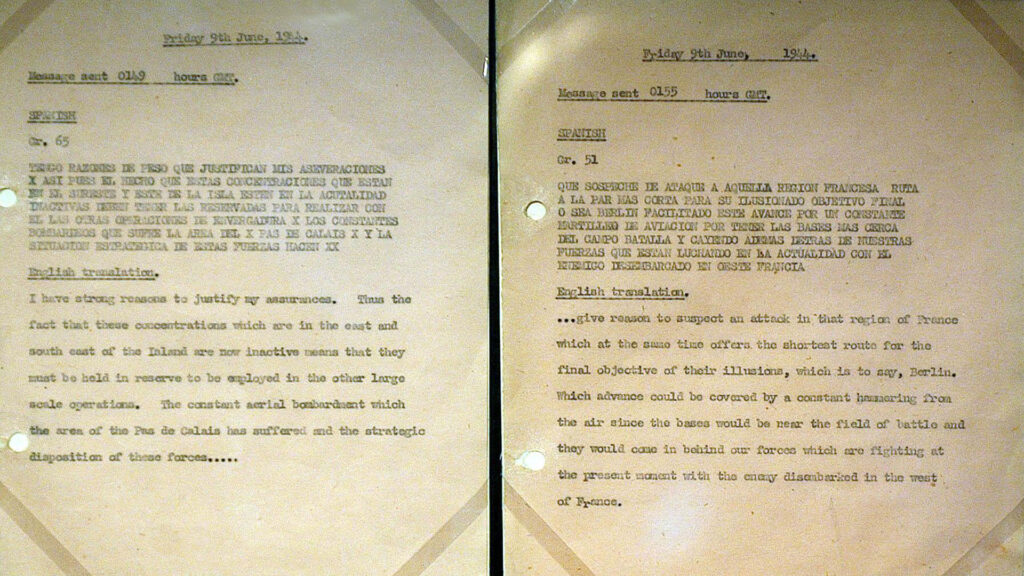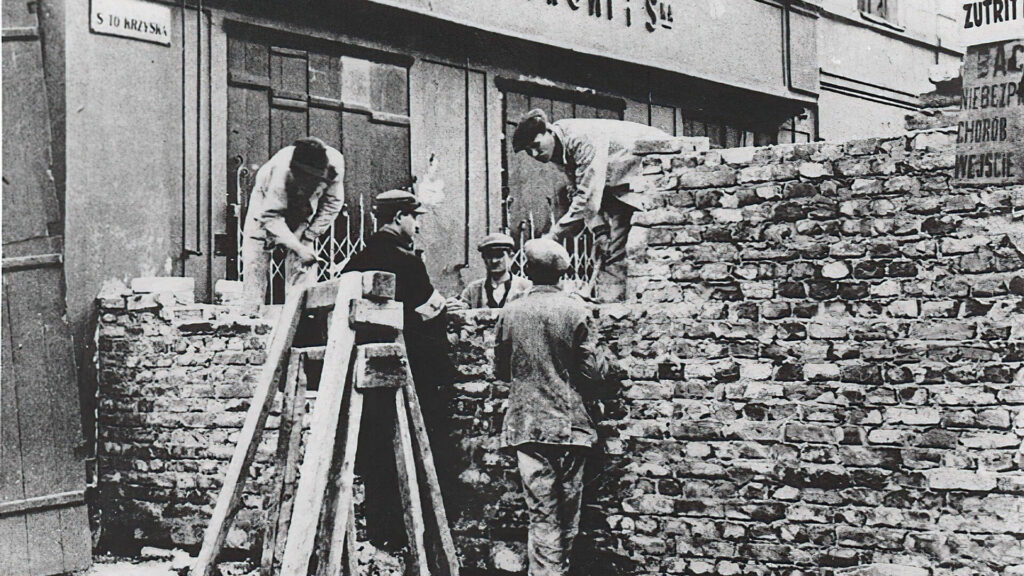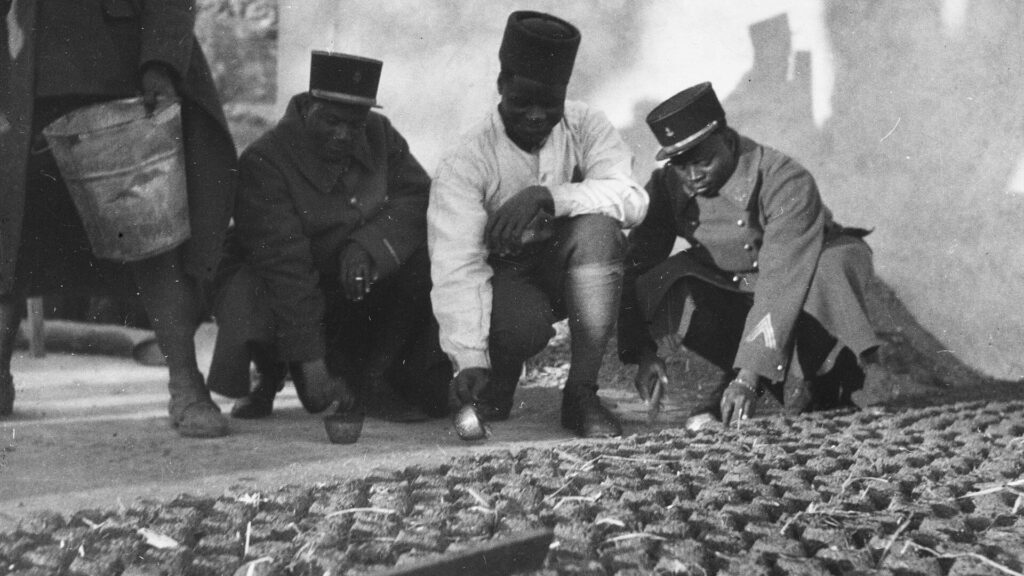Episode 3: History & Images
World on Fire’s plot closely follows the real-life history of WW2. The third episode of Season 2 touches on Warsaw’s Jewish ghettos, the situation of minorities in occupied France, and Britain’s MI5 intelligence work. What purpose did the Nazis intend the ghettos to play? Why was MI5 investigating people within England’s borders? Discover more about these topics here.
- 1.
Finding Enemy Agents within the UK


Wireless message sent to Germany by Juan Pujol Garcia, code named Garbo, Britain’s greatest double agent during WW2 During Episode 3, Kasia first confronts James Danemere about his military intelligence work, then is recruited by him to find enemy agents in Britain. In fact, the MI5 (Military Intelligence, Section 5) Security Service had remarkable success uncovering subversives within England and played a vital role in WW2. According to MI5’s website, German records found after the war showed “almost all of the 115 or so agents targeted against Britain during the course of the war had been successfully identified and caught.”
MI5 was specifically charged with internal British security and domestic counterintelligence activities, but it had no power to arrest, according to Britannica. The Service conducted security interviews with German, Austrian, and Italian citizens living in the country. Its female and male agents intercepted Nazi communications about troop movements, supplies, bunker locations, and new weapons—but also fed false information back to Germany. MI5’s “performance in running a stable of double agents during the Second World War is still regarded as a textbook example of how such operations should be conducted,” says the BBC. Turning subversives into double agents was called the “Double Cross System.” According to the BBC, “Thirteen German agents were executed in Britain during the war, but more than three times that number had actively co-operated with their MI5 handlers.”
Read the (lighthearted) story of a British family questioned by MI5. The memory is part of the BBC’s WW2 People’s War archive.
- 2.
Warsaw’s Jewish Ghetto


Workers build a brick wall to block off the Jewish ghetto portion of Warsaw, Poland in 1940 Episode 3 shows Sir James Danemere reading a newspaper headline about the German’s setting up a Jewish ghetto in Warsaw. “Since [1938’s] Kristallnacht, a great effort had been made by the Germans to expel their Jews,” World on Fire historical advisor Richard Overy tells the MASTERPIECE Studio podcast. “Most of the countries they thought would accept them, like Britain and the U.S., put up all kinds of barriers. More and more Jews were, in effect, trapped in Nazi Europe. The plan was to ghettoize them. The hope was that the ghettos would take a toll on the Jewish population through illness and malnutrition.”
In November 1940, the Warsaw ghetto was sealed off from the rest of the city by a wall, which Nazis and Polish police patrolled on the outside. Only Jews with special permits could leave. Over 400,000 people were imprisoned in an area of 1.3 square miles, according to The Wiener Holocaust Library. “More than 5,000 people a month succumbed to starvation and disease,” says the U.S. Holocaust Memorial Museum.
Listen to Warsaw ghetto survivor Alicia Gornowski talk about life as a young girl inside ghetto walls (at 12:00) in an oral history recorded for the Imperial War Museum.
- 3.
Plight of Blacks in Occupied France


French Senegalese soldiers, WWII In Episode 3, French prisoners Luc and Albert discuss how there are no more Blacks left in Paris. “The Nazis went after them all. The Algerians. The French. Wherever they came from. Just because of the color of their skin,” says Luc.
The oppression of Black and mixed-race people by Germany “was complex and often contradictory, taking place at different times and being implemented in different ways across the German Reich,” according to The Wiener Holocaust Library. In Vichy France, people of color were “to ride in the last carriage of the metro, to stay within the limits of the demarcation line, and to give up their professions in the arts,” writes University of Westminster historian Dr. Ludivine Broch. The Wiener Holocaust Library notes that Blacks ended up in Nazi prisons for their involvement in the French Resistance or simply for their skin color. “Some concentration camp records indicated that race was, at the very least, a significant contributing factor as to why people were incarcerated.”
Beyond the Black civilians in France, there were also some 75,000 soldiers from African Colonies fighting with the French army. And while the Third Reich had issued no specific guidelines on the treatment of Black soldiers taken prisoner, “the existence of a well-implanted anti-Black racism and stereotypes among the German soldiers frequently resulted in the Black French troops being separated from other prisoners of war,” according to Humanities and Social Sciences Online, a consortium of scholars and teachers. Indeed, the organization reports the Nazis massacred between 1,500 and 3,000 Senegalese soldiers in 1940.
Learn about African-American jazz singer Josephine Baker’s role in the French Resistance in this profile done by The National WWII Museum in New Orleans.




















